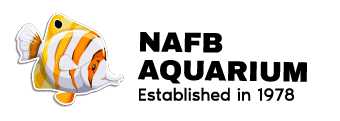Slate Cory (Corydoras Concolor)
The Slate Cory, also known as Concolor Cory, is a unique species known for its uniform slate grey coloration, which gives it its common name. This species has a slender body shape typical of many Corydoras and features a pair of barbels on the upper jaw. The body is entirely slate grey, with a slightly lighter belly. The fins are also grey, with the dorsal, pectoral, and tail fins showing a slightly darker shade. The Slate Cory is a medium-sized Corydoras, reaching an adult size of up to 2.5 inches.
This peaceful shoaling fish thrives best when housed in groups of no less than 6 individuals, creating a dynamic and harmonious aquarium environment. The Slate Cory is compatible with a wide array of popular fish species, including Dwarf Cichlids, Tetras, Rasboras, Guppies, Mollies, Swordtails, Angelfish, Hatchetfish, peaceful Barbs, and other peaceful Catfish. Avoid housing them with aggressive, territorial, or larger fish that might see them as food or compete with them for food at the bottom of the tank.
Feeding Slate Cory’s easy; they enjoy an omnivorous and will eat most food that sinks to the bottom of the tank, including sinking, flake, and catfish pellets. They also have a carnivorous side, enjoying foods such as bloodworms, brine shrimp, and daphnia.
In terms of habitat, the Slate Cory thrives in well-oxygenated water with a moderate flow, mirroring their natural riverbed habitats. They favor a soft sandy substrate where they can safely forage for food without damaging their delicate barbels and underbelly, which could otherwise lead to infection and other health complications. The aquarium should be furnished with ample hiding spots, including driftwood, rocks, caves, and live plants to offer shade and relief from the light. Floating plants can provide subdued lighting, creating an ideal environment for these bottom-dwelling fish.
Regarding their water parameter and aquarium size, the minimum recommended aquarium size is 20 gallons or larger for a community tank. The Slate Cory prefers a pH range of 6.0-7.5, a hardness of 2-10 dGH, and a temperature range of 72-79°F (22-26°C).
To learn more about this fish, be sure to check out the Additional Information tab.



Reviews
There are no reviews yet.